# Entando Customer Portal
# Overview
The Entando Customer Portal enables an organization to quickly provide a modern, self-service, customer-facing application for managing subscriptions. It includes a lightweight integration to Jira Service Management for access to service tickets and a role based access control (RBAC) design for granting users varying levels of access.
Key Features:
- Customizable service ticket tracking system with Jira Service Management
- Role based access control with Entando Identity Management System
- Integrated user, customer, project, and subscription management
This tutorial covers:
# Installation
# Prerequisites
- A working instance of Entando running on Kubernetes. See Getting Started for more information or install Entando on any Kubernetes provider.
- Use the Entando CLI command
ent check-env developto verify dependencies - A Jira Service Management account
- A Keycloak server (opens new window) configured with the SMTP settings to enable email verification for users
# Automatic Install via the Entando Hub
# Integrate the Entando Hub into your App Builder
- Log in to your
App Builderand go toHub→Select Registry - Choose
Entando Hubif it has been configured, otherwise:- Choose
New Registry - In the pop-up window, enter
Entando Hubandhttps://entando.com/entando-hub-api/appbuilder/apifor the URL, thenSave - Click on the Hub in the Registry
- Choose
# Install the Customer Portal
From the Hub Catalog, Deploy and Install the Customer Portal application first, then the content bundle
# Assign Roles to Configure the Service
- Log in to your Keycloak instance as an admin
- Give at least one user the ability to manage the Customer Portal by granting the
cp-adminrole- The
cp-adminrole is assigned from thepn-a71d68dd-166dc0f4-entandodemo-customerportal-serverclient. See Role Assignment in ID Management for more details.
- The
- Give the generated plugin client permission to manage users:
- From the left sidebar, go to
Clientsand select client IDpn-a71d68dd-166dc0f4-entandodemo-customerportal-server - Click the
Service Account Rolestab at the top of the page and selectrealm-managementfrom theClient Rolesfield - Choose
realm-adminfromAvailable Roles, then clickAdd selected. It should appear as anAssigned Role.
- From the left sidebar, go to
# Navigate to Your Customer Portal
- From the sidebar, go to
Page→Management - Find the
Customer Portalfolder - From the
Actionspull-down menu, go toView Published Page
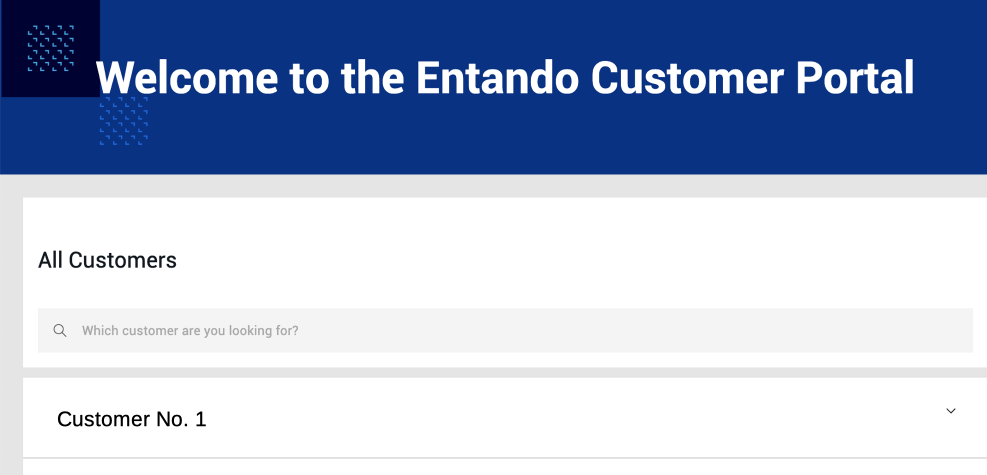
# Manual Install
- To install the Customer Portal manually, run the following commands:
ent ecr deploy --repo="https://github.com/entando-samples/customerportal-application-bundle.git"
ent ecr deploy --repo="https://github.com/entando-samples/customerportal-content-bundle.git"
Log in to the App Builder
Go to the
Hubin the left sidebar to view the two Customer Portal bundles.Installthecustomerportal-application-bundlefirst, then thecustomerportal-content-bundle.To navigate to your Customer Portal:
- From the sidebar, go to
Page→Management - Find the
Customer Portalfolder - From the
Actionspull-down menu, go toView Published Page
- From the sidebar, go to
# Configuration
# Administrators
In order to configure the Customer Portal and its users, the administrator needs Jira Service Management and Entando Identity Management System credentials. The admin can then connect the Customer Portal to Jira and customize its features.
Note: The built-in mapper for email must be enabled on the server client so that user accounts can be retrieved from Jira and new tickets can use that account information.
# Jira Service Management
Users who need access to the Customer Portal, beyond subscription and project information, must have a Jira Service Management account. The administrator utilizes Jira Service Management to create users and projects, define the organization, and configure the service ticket system.
TIP
The password for Jira Service Management must be an API token generated by Jira (opens new window). For more information, go to Manange API tokens at Atlassian Support (opens new window).
The JIRA Service Management REST API should follow the pattern https://YOUR-JIRA-SERVICE-MANAGEMENT-URL/rest/api/latest/. For reference, see Jira Service Management Cloud REST APIs (opens new window).
# Add Organizations and Projects in Jira:
- Go to Customers
- Add organizations and projects as needed
- Click on the name of each added organization to retrieve its ID from the URL. This is required to create and assign projects in the Customer Portal
- e.g. example.com/jira/servicedesk/projects/ECS/organization/3 → the Organization ID is “3”
# Configure the Customer Portal
The Customer Portal must be configured for a specific Jira Service Management instance. The CP Admin Config page is where you establish the Jira connection, manage product versions, define subscription levels, and customize ticket types.
To access the CP Admin Config page, you must be given the cp-admin role in the Entando Identity Management System as described above.
# View the CP Admin Config Page
- In the App Builder, go to
Pagesand selectManagement - Open the Customer Portal folder and find
CP Admin Config - From the
Actiondrop-down menu on the right, go toView Published Page
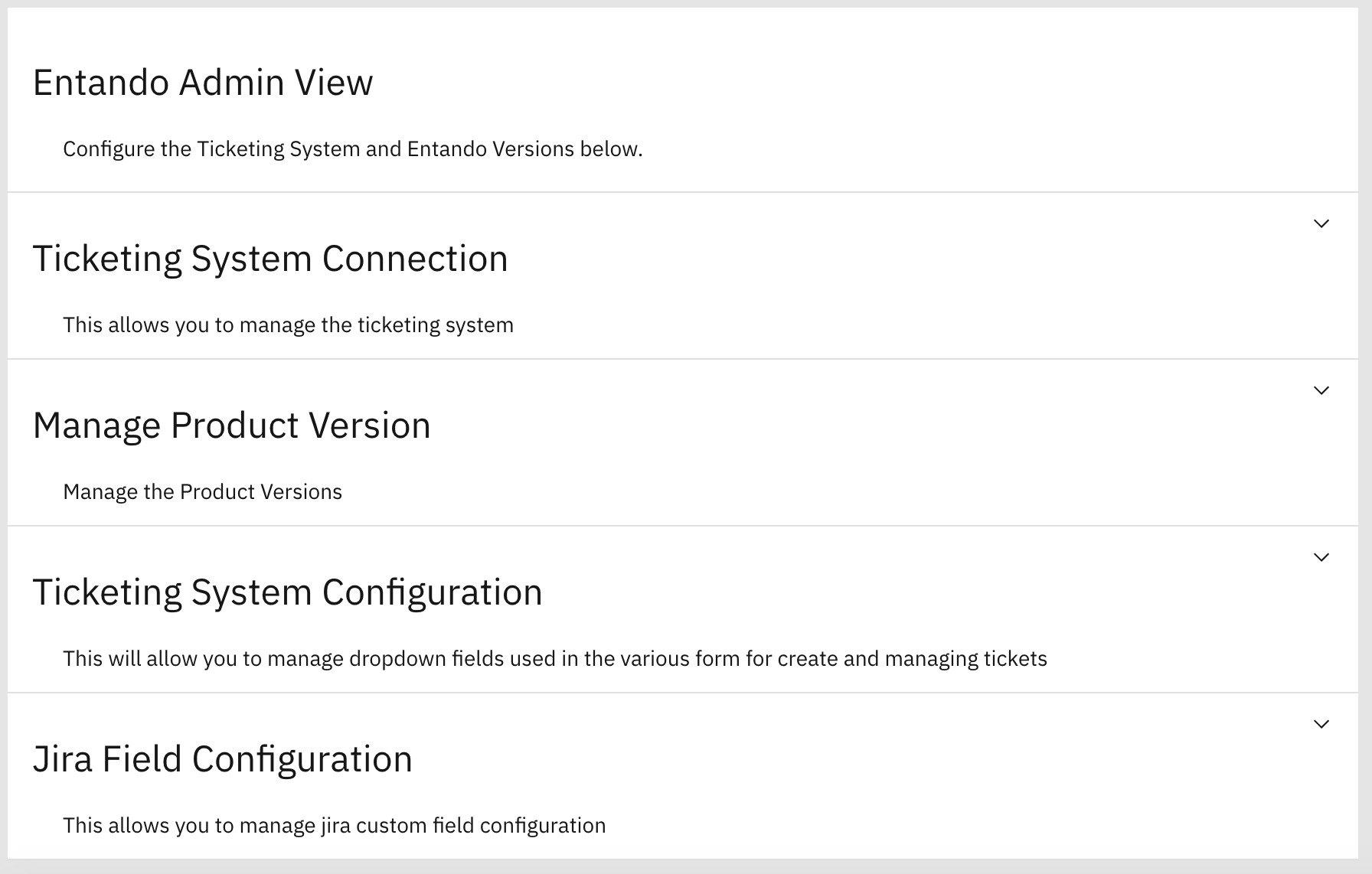
Once the Ticketing System Connection is set up with Jira and the correct URL, default parameters such as product versions and ticket types will be displayed. Open each section with the down arrow to add and edit the fields as needed.
TIP
The password for the Ticketing System Connection is requested by the Customer Portal administrator and must be an API token generated by Jira (opens new window). For more information, go to Manange API tokens at Atlassian Support (opens new window).
# Entando Identity Management System
Log in to the Entando Identity Management System to arrive at the landing page shown here. Use the left navigation bar to manage users, groups, and roles. Using the RBAC model, define what access users have by the roles and groups they are assigned. Some important information is noted below.
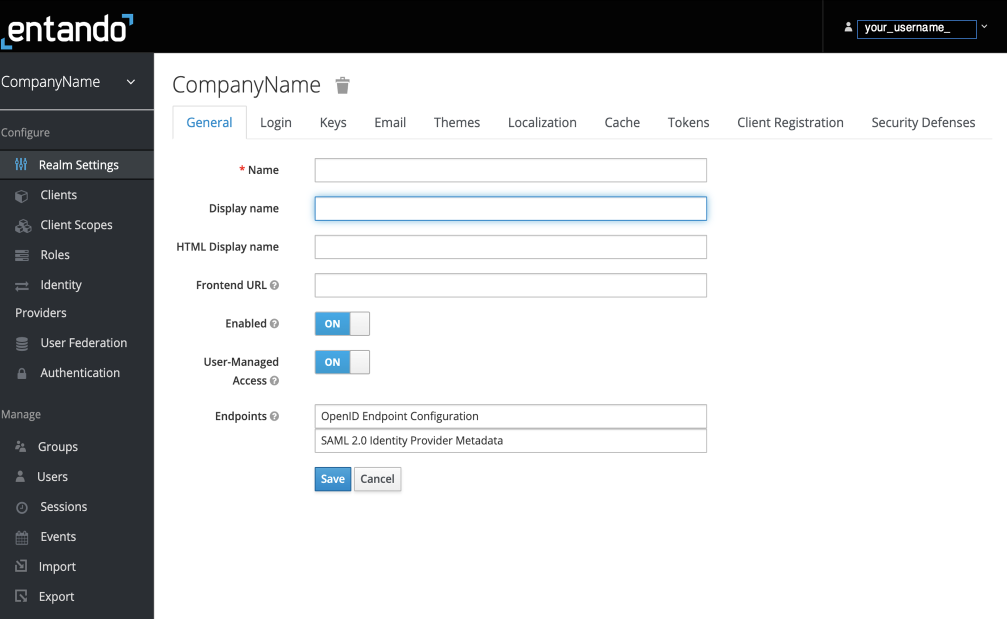
# The Realm Setting
The Realm is a set of users, credentials, roles, and groups. A user belongs to and logs in to a Realm.
# Default Roles
You can use the default roles by clicking on Client Roles and choosing entandodemo-customerportal-server. Access for each role is defined as follows:
cp-customer: Assigned directly to specific projects of a single customercp-partner: Assigned directly to specific projects of multiple customerscp-support: Read only view of all customer projectscp-admin: Admin access to the Customer Portal
# Create New User
- From the sidebar, go to
Users - Click
Add Useron the right - Complete the form as needed, but note the requirements for these fields:
Username: A unique nameEmail: Must use the same address used in JiraUser Enabled: Set to On
- Click
Save - Send an email to the user to activate their account and set a new password:
- Go to the
Credentialsheader - Under
Credential Reset, go toReset Actions→Update Password - Click
Send Email
- Go to the
# Assign Roles to Users
- Click on the
Role Mappingtab - Select the appropriate role(s) from
Available Rolesand assign them to a user by clickingAdd Selected:- To assign default roles, choose
entandodemo-customerportal-serverfrom theClient Rolespull-down - To manage users in the Customer Portal, a user will need full administrative privileges via the
realm-adminrole underClient Roles→realm-management
- To assign default roles, choose
- Check the
Effective Rolescolumn on the right to ensure the correct roles have been assigned
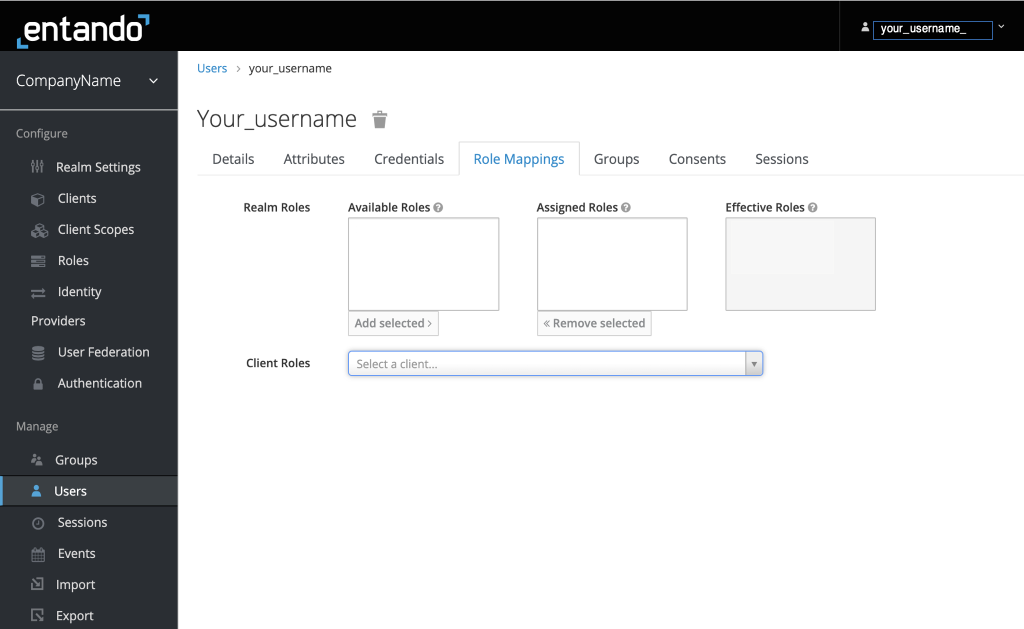
# Assign Roles to Groups
Under Groups, assign roles to groups as needed. Multiple roles can be assigned to a single group.
# Managing the Customer Portal
As administrator for the Customer Portal, you can create and manage users, customers, projects, and subscriptions. You can assign projects to users who have activated their account on Jira and have been assigned roles in the Entando Identity Management System.
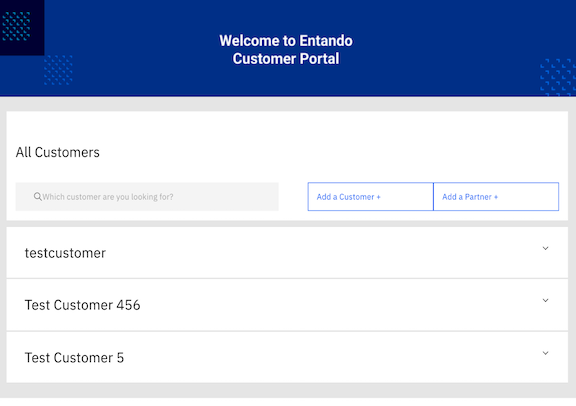
# Create a Customer or Partner
The processes to create customers and partners are similar. Below are the steps to add a Customer. A Partner is added the same way.
- Click
Add a Customer - Fill in the customer details. Note:
- The
Customer Numbermust be unique - The
Notesfield is visible to onlysupportandadminusers
- The
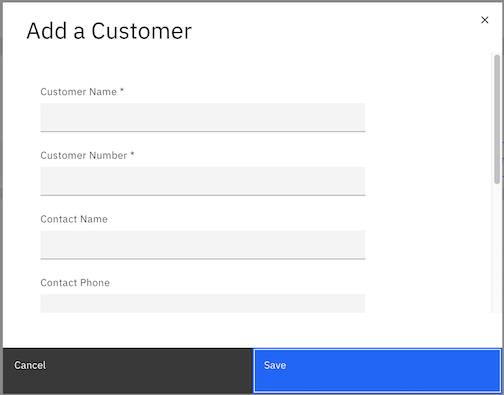
# Create a Project
- Go to the Customer Portal landing page
- Click on a customer to see the associated project list
- Click
Add a Project - Enter the
Projectinformation - Provide the Organization ID retrieved from Jira. Each project must have a unique Organization ID.
- Click
Save
# Assign a Project
- Go to the Customer Portal landing page
- Click on a customer to see the associated project list
- From the
Actiondrop-down menu, selectManage Users - Select the user for the
Project - Click
Submit
# Manage Partners and Subscriptions
Use the Action drop-down menu to manage Partners or request and manage subscriptions.
# Using the Customer Portal
To access the Customer Portal, your organization administrator needs to provide you with the proper user credentials. Once you log in to the Customer Portal, you will see a list of customers. Click on an entry to view customer details and track projects. You can create and track service tickets, as well as request subscriptions.
To create a Service Ticket for a project: Go to the Action pull-down menu and select Open Ticket
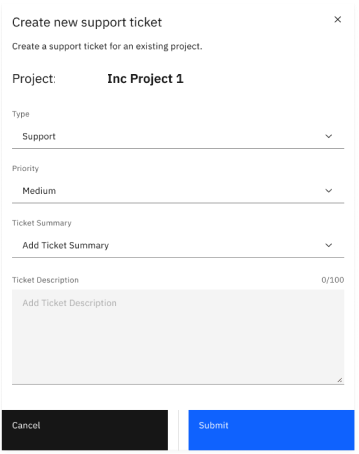
To request a Subscription or track Tickets: Go to the Action pull-down menu and select the corresponding option
# Resources
Go to Jira Service Management (opens new window) for more information
The source code for the Entando Customer Portal (opens new window) can be found on GitHub, along with our other open source examples and tutorials